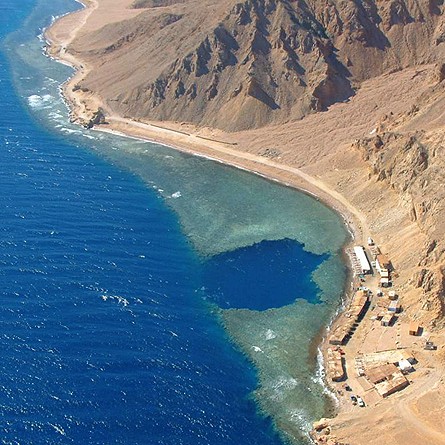The Blue Hole in Sharm El-Sheikh is a natural wonder that has fascinated divers and snorkelers from around the world. Located on the east coast of the Sinai Peninsula in Egypt, this area is known for its crystal-clear waters, diverse marine life, and breathtaking underwater scenery. But what distinguishes The Blue Hole from other diving destinations, and why is it considered one of the most famous areas in the world? In this article, we will explore the unique features of The Blue Hole and what makes it such a special place to visit.
History and Formation
The Blue Hole is a circular, underwater sinkhole that plunges to a depth of over 100 meters. It was formed during the last Ice Age, when the sea level was much lower than it is today. As the sea level rose, water flooded the area, creating a deep depression that gradually filled with water. The Blue Hole is connected to the Red Sea by an underwater tunnel that is about 26 meters long, which allows seawater to flow in and out of the sinkhole.
Diving at The Blue Hole
The Blue Hole is known for its challenging diving conditions, and is recommended only for experienced divers who have logged a minimum of 50 dives. The depth of the sinkhole, combined with its narrow entrance and exit points, creates a unique underwater environment that demands a high level of skill and caution. However, for those who are up to the challenge, diving at The Blue Hole can be an unforgettable experience.
The walls of The Blue Hole are covered in a stunning array of coral formations, including soft and hard corals, gorgonian fans, and sea anemones. These corals provide habitat for a vast array of marine life, including colorful reef fish, sea turtles, rays, and even dolphins. The clarity of the water in The Blue Hole is exceptional, with visibility often exceeding 30 meters.
One of the most famous features of The Blue Hole is the "Arch", a natural rock formation that spans the entrance to the sinkhole. Divers can swim through the Arch and descend into the depths of the sinkhole, where they will find an underwater landscape that is both eerie and breathtaking. Along the walls of the sinkhole, divers can explore a network of tunnels and caves that provide a glimpse into the unique geology of the area.
Other Activities at The Blue Hole
While diving is the main attraction at The Blue Hole, there are also other activities that visitors can enjoy. Snorkeling is a popular alternative for those who are not certified divers, as the shallow waters around the sinkhole are teeming with colorful fish and coral. Visitors can also relax on the beach or explore the surrounding desert landscape on foot or by camel.
Visiting The Blue Hole
To visit The Blue Hole, most visitors travel to Sharm El-Sheikh, the nearest city to the dive site. Sharm El-Sheikh is a popular tourist destination in its own right, known for its luxurious resorts, stunning beaches, and vibrant nightlife. From Sharm El-Sheikh, visitors can arrange a guided dive or snorkel excursion to The Blue Hole, or rent equipment and explore the area independently.
Conclusion
The Blue Hole in Sharm El-Sheikh is a natural wonder that attracts divers

